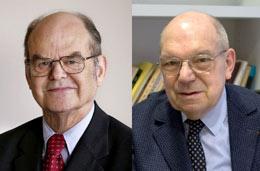
Europe's "Jules Verne" freighter has demonstrated the ability to navigate itself to a point just 3,500m from the International Space Station.
The cargo ship, which carries some five tonnes of supplies for the platform, was then instructed by ground control to "escape" to a safe distance.
It was the first of two demo days the vehicle must complete before being allowed to dock with the ISS.
Practice manoeuvres on Monday will take Jules Verne to 12m from the station.
Again, the session will end with the 19-tonne freighter being instructed to remove itself to a safe distance, about 100m from the platform.
If ISS mission managers are satisfied with what they have seen, they will permit an automated attachment to occur on Thursday.
Jules Verne is the biggest, most sophisticated spacecraft yet flown by the European Space Agency (Esa).
Technology check-out
It has been designed to operate independent of human control. The vehicle can fly itself to the platform and execute an automatic docking.
Ground staff in Toulouse, France, give the ship permission to move through a series of hold points; but they will only intervene in the vehicle's decision-making if something is seen to be going wrong.
Being a completely new vessel, however, Jules Verne (also known as the Automated Transfer Vehicle - ATV) must prove its systems.
Demonstration Day One allowed the vehicle to show off its navigation capabilities using an advanced form of GPS. Radar and communications technologies were also checked out. Controllers even got a glimpse of the dot-like ship through an ISS camera (pictures can be seen on Esa's ATV Blog).
Demonstration Day Two will give Jules Verne the opportunity to show off the optical sensors it will use for the close proximity manoeuvres that will take it right into the docking cone on the back of the station's Zvezda module.
Currently, Thursday's docking procedure is booked to begin at 1144 GMT, with the ATV starting from a hold point 250m from the ISS.
Contact is timed for 1441 GMT. The cargo ship's speed relative to the station at that moment will be about seven cm/second. Of course, the two objects - cargo ship and station - will in fact be moving across the surface of the Earth at about 27,000km/h.

Once a seal and electrical connections have been confirmed, and the astronauts have checked the air inside the ATV is safe to breathe - the supplies can be unloaded.
Crews will use Jules Verne like a store cupboard.
They will go into the pressurised vessel to obtain food, clothing and equipment when they need it. Fuel will be piped across to the main station complex; water will be carried out in bags; air will simply be vented from taps.
As the supplies are depleted, the space will be filled with rubbish. Jules Verne is expected to take this waste into a controlled burn-up over the Pacific Ocean when it leaves the station later this year.
The ATV Launched on 9 March. Esa is delighted with the way the mission has gone so far.
The agency's ATV project manager, John Ellwood, told the BBC on Friday: "We've had the usual small anomalies; we're learning how to fly the bird - but nothing that has been really difficult."
















